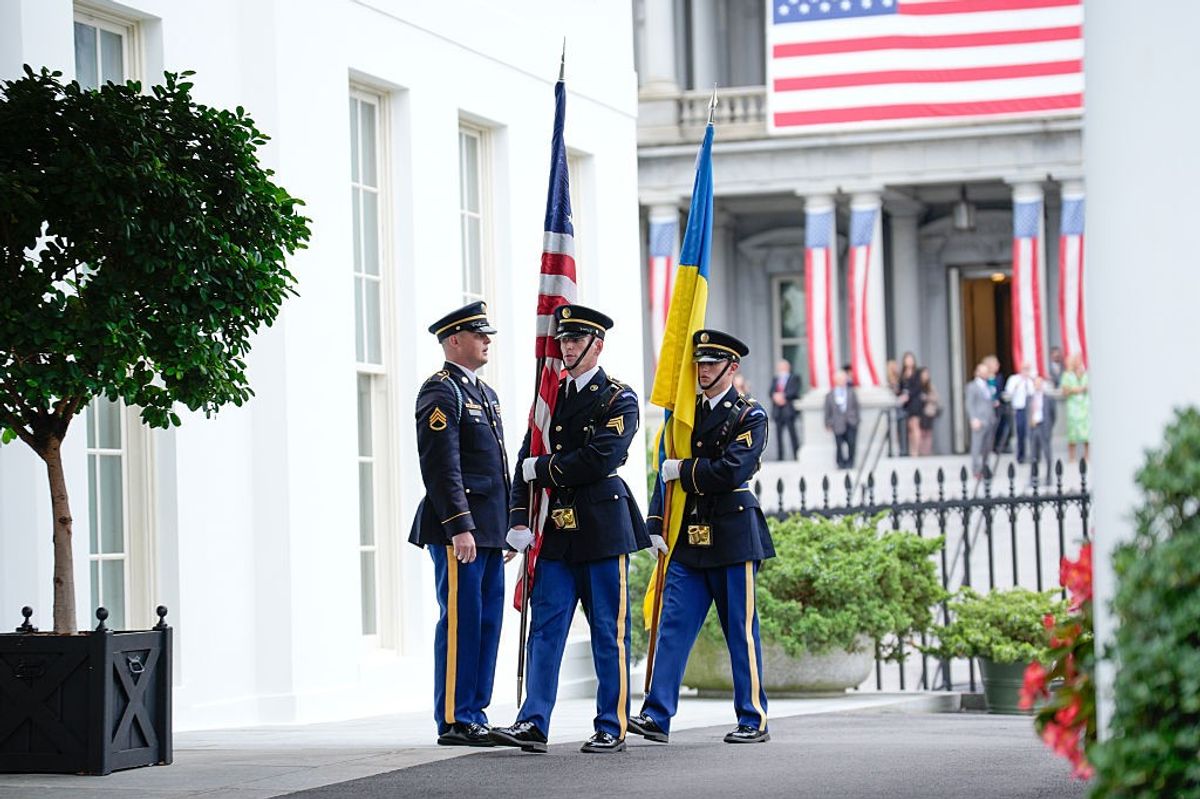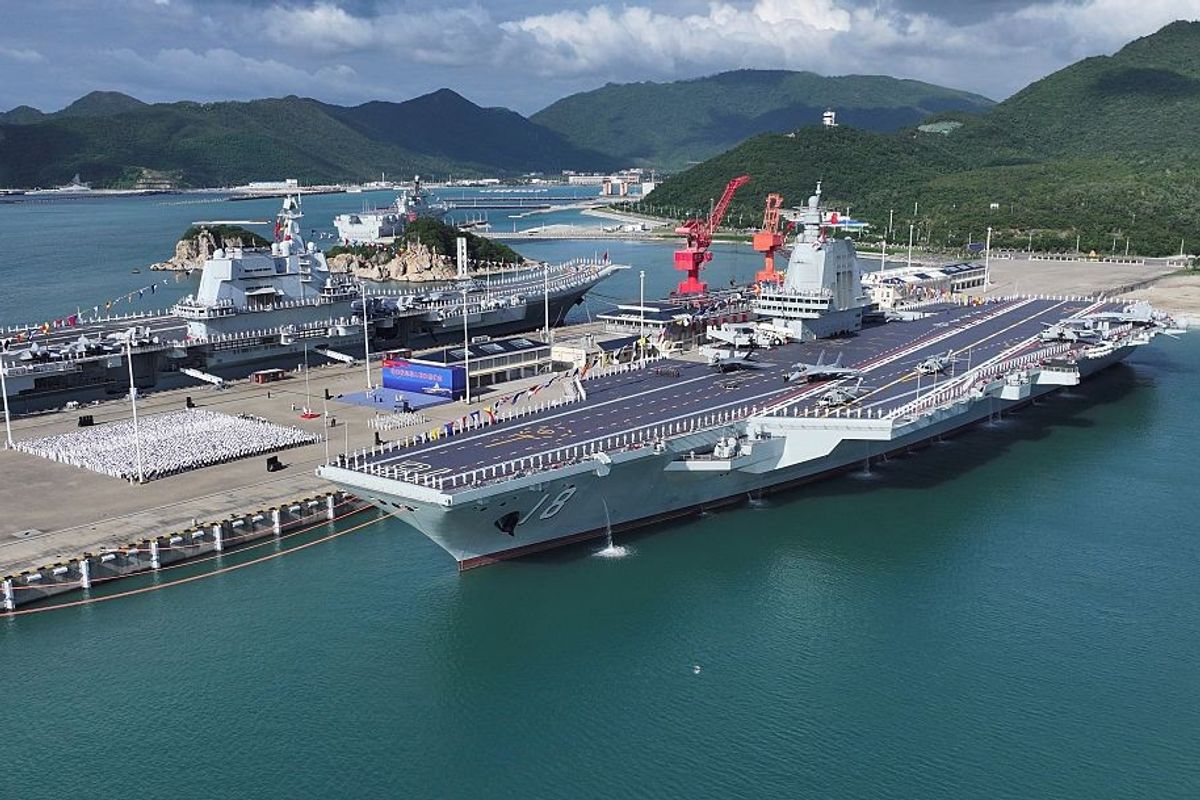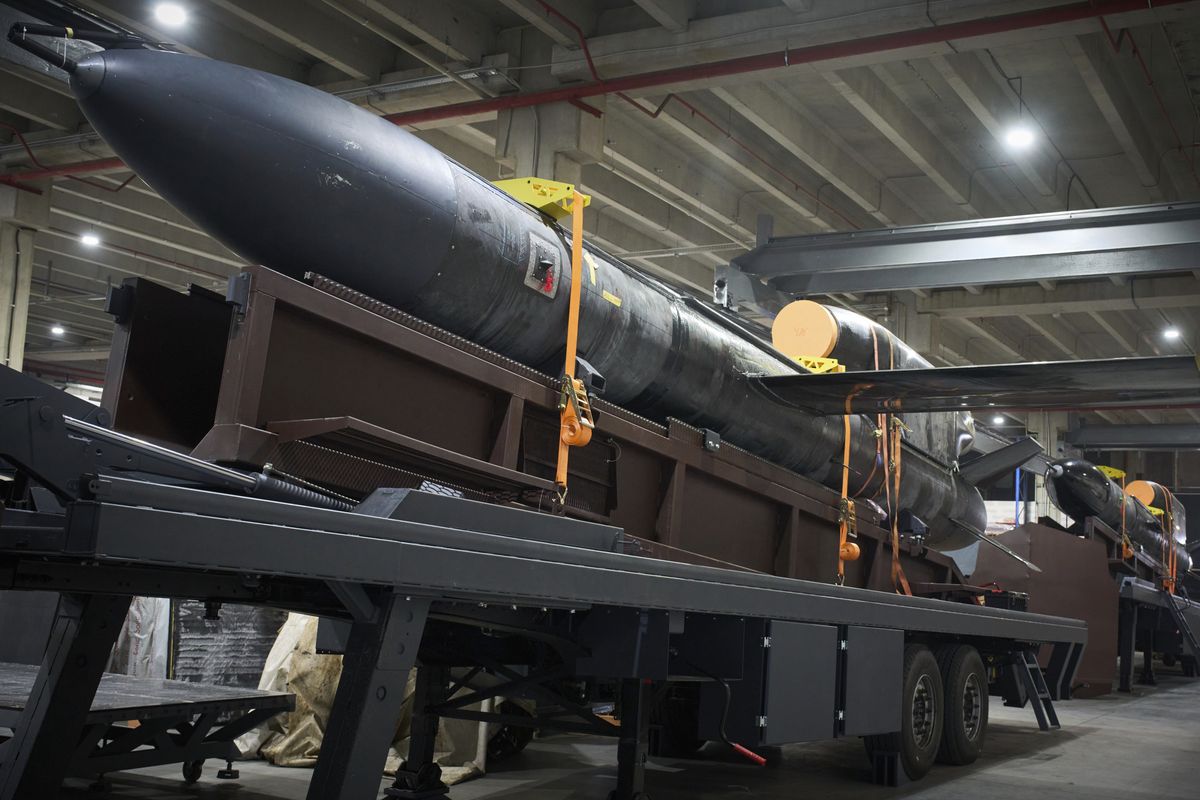EXPERT PERSPECTIVE – Following recent Russian airstrikes on Kyiv, Germany sent the first of four planned IRIS-T SLM air defense systems to Ukraine. France, the UK and the Netherlands all promised to speed up new air defense system packages. And the US has now delivered a few units of National Advanced Surface-to-Air Missile System, known as NASAMS.
As Kyiv calls for air defense systems to counter Russian strikes, others are also assessing their missile defense systems. Latvia has asked NATO to establish a missile shield over the Baltic states to bolster the alliance’s eastern flank against potential Russian attacks. Fifteen NATO allies recently pushed this further by signing a letter of intent to develop a German-led missile shield over Europe under the “European Sky Shield Initiative.” In the Middle East, Israel and a number of Arab countries have considered joint missile defenses against potential Iranian attacks. Israel’s recent sale of advance air defense systems to the United Arab Emirates underscores the new urgency to address this threat.
The US has also expressed concern over heightened missile threats. The Biden administration’s recently released Missile Defense Review (MDR) focuses on the cruise missile threat, highlighting heightened risks with the development of hypersonic technology. In addition to regional threats in Europe and the Middle East against US overseas military bases and allies, the MDR also notes threats to the homeland.
BACKGROUND
- A July report from the CSIS Missile Defense Project Team entitled “North America is a Region, Too,” focused on the homeland threat. The report warns that a long-term homeland missile defense is likely far-off due to issues with integration into the wider missile defense portfolio and lack of sensor coverage.
- The US military has received relatively modest support for developing cruise missile defense systems and policy, especially for the US homeland. Funding for cruise missile defense is usually added to so-called wish lists rather than being included in base budget requests. There is also ambiguity on the desired scope of cruise missile defenses. The Pentagon also only recently designated the Air Force to be the acquisition authority for homeland cruise missile defenses following years of bureaucratic logjam on the matter.
- Past US defense doctrine prioritized wider strategic nuclear deterrence since it assumed cruise missile attacks would be coupled with nuclear attacks. However, with the rise of precision-guided missiles, new stealth capabilities and hypersonic technology, this assumption is being challenged. More military planners are expressing concern that China or Russia could launch an attack below the nuclear threshold, thus making proper cruise missile defenses necessary.
- There is movement by Congress and the US military to address the cruise missile defense gap. North American Aerospace Defense Command (NORAD) and US Northern Command (NORTHCOM) say they are working on a design framework for cruise missile defenses in the US homeland. NORTHCOM is also seeking $278 million for new over-the-horizon radars and nearly $1 billion for cruise and ballistic missile defenses for Guam for the 2023 fiscal year. Likewise, Senate’s version of the FY23 National Defense Authorization Act includes another $50.9 million for cruise missile defenses.
THE EXPERTS
The Cipher Brief tapped two former NATO Supreme Allied Commanders, Admiral James Stavridis (Ret.) and General Phil Breedlove (Ret.); former Vice Chairman of the US Joint Chiefs of Staff, Admiral James ‘Sandy’ Winnefeld; and Stanton Senior Fellow in the Nuclear Policy Program at the Carnegie Endowment for International Peace Ankit Panda for a wide-range expert perspective on the state of US cruise missile defenses and how best to improve them.
Admiral James ‘Sandy’ Winnefeld, Former Vice Chairman, Joint Chiefs of Staff
Cipher Brief Expert Admiral James 'Sandy' Winnefeld served for 37 years in the United States Navy. He retired in 2015 after serving four years as the ninth Vice Chairman of the Joint Chiefs of Staff and the United States’ number two ranking military officer.
Admiral James Stavridis, Former Supreme Allied Commander, NATO
Cipher Brief Expert Admiral James Stavridis was the 16th Supreme Allied Commander at NATO and the 12th Dean of the Fletcher School of Law and Diplomacy at Tufts University. He is currently Vice Chair, Global Affairs and Managing Director at The Carlyle Group and Chair of the Board of the Rockefeller Foundation.
General Philip M. Breedlove, Former Supreme Allied Commander, NATO
General Philip M. Breedlove retired as the Commander, Supreme Allied Command, Europe, SHAPE, Belgium and Headquarters, U.S. European Command, Stuttgart, Germany. He served in several senior staff positions including Vice Chief of Staff of the U.S. Air Force; Senior Military Assistant to the Secretary of the Air Force; and Vice Director for Strategic Plans and Policy on the Joint Staff.
Ankit Panda, Stanton Senior Fellow in the Nuclear Policy Program at the Carnegie Endowment for International Peace
Ankit Panda is the Stanton Senior Fellow in the Nuclear Policy Program at the Carnegie Endowment for International Peace. Panda is also editor-at-large at the Diplomat. He is an expert on the Asia-Pacific region with research interests ranging from nuclear strategy, arms control, missile defense, nonproliferation, emerging technologies and US extended deterrence.
Expert Perspective
The Cipher Brief: Where does the US face a serious threat from the use of cruise missiles?
Stavridis: In terms of staging defenses against, for example, sea-launched cruise missiles, it would seem prudent to begin by defending major cities, large military complexes, and of course the capital of the United States.
Winnefeld: Most likely in the Middle East, where Iran has not hesitated to strike American troops hosted by our regional partners, especially given its resolve to avenge the death of Qasem Soleimani. U.S. troops could also be collateral damage from an Iranian strike on a host nation itself, such as Iran's attacks on Saudi Arabian oil infrastructure.
Panda: The Army’s primary focus on cruise missile is for Guam, where there are concerns about emerging threats from China potentially in a future Indo-Pacific conflict. An Iron Dome unit is deployed temporarily on Guam and is undergoing testing and evaluation.
Breedlove: There are immediate threats in Europe, at European bases. We used to have the Intermediate-Range Nuclear Forces (INF) Treaty and it covered a whole range of things. We don't have the INF anymore.
Also, the cruise missile problem from submarine launch platforms on our coasts is a very real problem. We do not have the kind of radars we need to defend against a cruise missile attack,… nor the numbers to protect either our West coast or our East coast. Those are big, big places, and our radars are fairly limited in range. The big, over the horizon radars, look at medium and high altitude airplanes, that's a different problem. But sea skimming cruise missiles are hard to see on the coasts. We’ve looked at systems like the JLENS, systems that hang in balloons and other things to try to get vision down so that we can see cruise missiles.
The Cipher Brief: What are the biggest challenges the US faces in developing cruise missile defenses? Is there a lack of developed capabilities, issues with integration or lack of strategy?
Stavridis: As technology matures and cruise missiles become more stealthy, higher speed (into the hypersonic zone), miniaturized, and carrying advanced explosive loads - they are simply much more dangerous and difficult to defend against.
Winnefeld: The U.S. possesses sophisticated cruise missile defense capability in the form of Patriot and the NASAMS systems. These systems will only improve with the introduction of the Lower Tier Air and Missile Defense System (or LTAMDS), which is a replacement for existing Patriot radar systems (Disclosure: I am on the board of Raytheon Technologies, which produces all three systems).
However, these defensive systems are expensive relative to the threats they are designed to counter and are effective at fairly short ranges against extremely low altitude threats (and thus have a relatively constrained defended area footprint). Moreover, as cruise missiles (particularly anti-ship cruise missiles) increase in sophistication, and are combined with ballistic missile attacks, they will be harder to counter. Given current technology, the issue is less strategy than it is resource constraints — there are simply not enough systems to go around.
Panda: A big challenge with cruise missile defense is on the sensor side: unlike ballistic missiles, cruise missiles remain entirely within the Earth’s atmosphere and are challenging to track with space-based sensors. Radars will often only detect cruise missiles late in their flight, making area defenses of the type the U.S. pursues for homeland ballistic missile defense infeasible at acceptable costs. NORAD and NORTHCOM have explored various cruise missile defense architectures and this continues to be a focus.
Breedlove: The first thing is detecting them. Hitting a ballistic missile, which is almost completely predictable, is far easier than hitting a cruise missile, which flies low and therefore is harder to see. Also, almost all cruise missiles maneuver. Sensing and being able to engage a cruise missile is an extremely hard kinetic problem.
The Cipher Brief: As the US works on an enduring cruise missile defense solution, what should it prioritize?
Stavridis: Iron Dome and other such systems can be helpful but over time, it seems inevitable that we have to move toward effective laser systems for speed and ability to overcome swarms of missiles.
Winnefeld: A good start would be to procure more launcher systems and ensure we have enough interceptors to manage perceived worst-case demand, both overseas and domestically (see my disclaimer above). As we all know, capacity has a capability all its own. That said, the U.S. should give priority to development of directed energy systems, especially high powered microwaves (HPM), designed to counter cruise missile threats, both ashore and at sea. Unlike lasers (which are mostly effective against close-in threats such as unmanned aerial systems), HPM systems actually do not require much power (contrary to commonly-held belief, due to their extremely short burst lengths), have an unlimited magazine size (as long as power is available), are more effective than lasers in dust and poor weather, and do not require dwell time on a target in order to render it ineffective. They should be a developmental priority, and used in conjunction with existing kinetic systems.
Panda: My sense is that cruise missile defense should focus on point defenses for critical military facilities and less on the homeland mission, which doesn’t strike me as being cost effective or feasible.
Breedlove: This is a step by step thing. We've got to see it. And that is not going to be accomplished by the type and number of radars that we have right now. We're going to have to have something like a JLENS, or we're going to have to have something in orbit, we need something that looks down if we expect to see it at a range that allows engagement. And then a highly manuevering target is going to take a highly maneuvering and capable interceptor.
The Cipher Brief: Do you think the US has been prioritizing ballistic missile defenses over cruise missiles? Is this an understandable development?
Panda: The U.S. has historically prioritized ballistic missile defense—especially since the National Missile Defense Act of 1999 and the 2002 exit from the Anti-Ballistic Missile Treaty. This was a function of the anticipated missile threats at the time to the U.S. homeland and to deployed U.S. forces.
Stavridis: We have been very focused of course on ballistic missiles which for decades have been the greatest threat; but in an era of advanced hypersonic nuclear tipped cruise missiles we are underweight in our ability to defend.
Breedlove: We're worried about ballistic missiles because that has been the threat due to their intercontinental capability. That is not easy either, by the way, just because of speed. They're not maneuvering, but the speed they're entering makes an intercept really hard. So we've been working on that because that's where almost all the throw weight of Russia is. But Russia and China are now moving towards cruise missiles because of all the problems. They know the problems, they have them. They have the same thing defending them against ours.
Winnefeld: The U.S. has been improving its cruise missile defense capability at the same time it has developed ballistic missile defenses. Again, this is a problem more related to capacity. From my point of view, however, we have not done enough in the realm of homeland defense. We are vulnerable to a cruise missile attack launched either from Russian long range bombers or, more worrisome, from cruise missile carrying submarines off our coast. Warning times will be too short for fighter aircraft to respond from anything other than a continuous airborne posture, and even then these assets need cueing and almost perfect geometry. Better to focus on point defense systems, such as Patriot and HPM systems, stationed to defend our highest value government, economic, and military assets.
Cipher Brief Writer Ethan Masucol contributed to this report
Read more expert-driven national security insights, perspective and analysis in The Cipher Brief
















